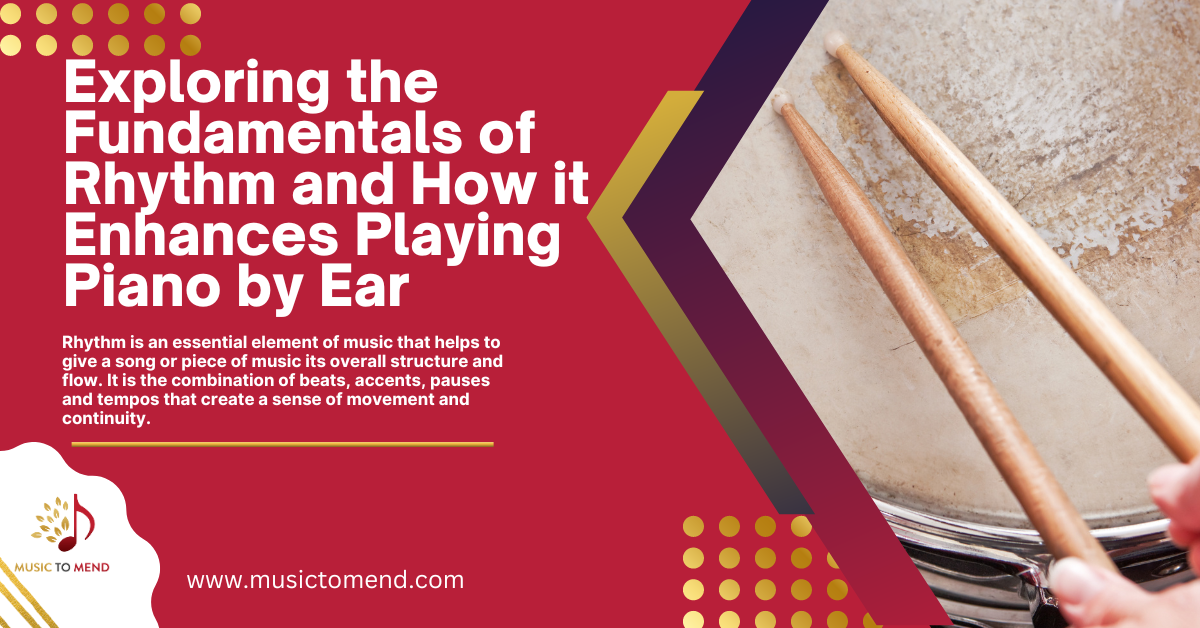Exploring the Fundamentals of Rhythm and How It Enhances Playing Piano by Ear
Understanding What is Rhythm & Its Role in Piano Playing by Ear
Rhythm is an essential element of music that helps to give a song or piece of music its overall structure and flow. It is the combination of beats, accents, pauses and tempos that create a sense of movement and continuity. Understanding rhythm can help piano players to be able to play accurately by ear as well as read sheet music more easily. By understanding the basics of rhythm, piano players will be able to be able to coordinate their hands in order to play with accuracy. Additionally, understanding rhythm can help piano players develop their improvisational skills as they learn how to add more expression into their playing by using syncopation and other techniques.
Rhythmic Exercises That Will Improve Your Ear Training & Creativity
Ear training and creativity are essential skills for any musician. Rhythmic exercises can help you to improve your ear training and creativity. These exercises involve rhythmic dictation, solfege, and rhythmic variations. By practicing these exercises regularly, you can become more aware of the different rhythms in music and develop a better sense of rhythm. This will help you to create more creative musical pieces with greater accuracy. Additionally, these exercises will also improve your ability to recognize musical patterns and nuances, which is key for creating unique musical compositions.

What is a Metronome and Why Should You Use it to Improve Your Rhythm?
A metronome is a rhythm practice tool that helps musicians to improve their rhythm. It is a tempo keeper and timekeeper that can be used to keep track of the tempo and rhythmic accuracy of a piece of music. By using a metronome, musicians can practice and improve their playing skills in order to achieve greater rhythmic accuracy and consistency. The use of a metronome can also help reduce the amount of time needed for practicing, as it allows musicians to focus on specific areas they need to work on without having to worry about keeping track of the tempo or timing.
How To Use Metronomes & Practice Pads To Perfect Your Timing & Groove
Perfecting your timing and groove when playing the drums is essential for any drummer. Using a metronome or practice pad can help you hone your skills and make sure that you are playing in time with the music. Metronomes are used to indicate the tempo of a song, while practice pads provide a way to practice drum rudiments and exercises without having to use an actual drum kit.
The Fundamentals of Drumming – Mastering the Different Beats & Rhythms
Drumming is a great way to express yourself musically, and it’s an important skill to have if you want to be a successful musician. Learning the fundamentals of drumming can help you create unique and interesting beats and rhythms that will make your music stand out. This article will provide an overview of the basics of drumming, including how to play different beats and rhythms on drums. It will also discuss how to create your own unique sounds with drums by combining different beats and rhythms. With this knowledge, you’ll be able to create dynamic and exciting music that will captivate your audience! Like any other instrument, the drum set comprises many different parts. There are the drums themselves, and then there are cymbals and pedals, as well as a variety of drumsticks. Once you start playing on the drum set, you will be able to play many different rhythms and beats. Here’s a brief list to get you started:Drums: bass drum, snare drum, hi-hat cymbal (a pair), ride cymbal (a pair), rack tom tomtom (a pair), floor tom tambourine.
Improving Your Groove & Feel for Playing Piano By Ear
Groove and feel are essential elements of music production. They help create a unique sound that resonates with listeners. Improving your groove and feel for playing piano by ear is a great way to become a better musician, as it allows you to create music that is more emotionally engaging.
By learning the basics of music theory, such as scales, chords, and progressions, you can begin to understand how each element contributes to the song’s overall sound. Additionally, learning how to use various techniques, such as improvisation and experimentation, will help you develop your own unique style when playing piano by ear. With practice and dedication, you can improve your groove and feel for playing piano by ear in order to create more dynamic pieces of music.
I hope you found this article helpful.
Until next time,
Bea







